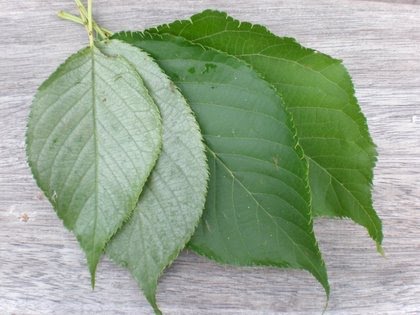Silver Leaf Disease
Cherry, plum, greengage, apples and pears are trees that can suffer from a fungal disease called silver leaf, chondostereum purpureum. It is spread by the wind to vulnerable neighbouring trees. It is an international disease that affects a whole host of different trees and shrubs throughout the world however in the UK it is mainly confined to stone and pip fruiting trees. Two trees that are highly susceptible to the disease are our native wild cherry, prunus avium and victoria plum, prunus domestica spp. As the name implies one way of identifying the disease is by the colour of the infected leaf. A silver sheen is present upon the surface of the infected leaf. It’s a good idea to compare with a healthy leaf.The trees are usually infected either through pruning cuts or through storm damage where the wound is left open for pathogens to enter into the tree. Although we have been experiencing milder winters of late there has been a notable increase in the amount of storms that sweep across the country. Storm damage is difficult to mitigate against however good tree pruning techniques and timing are very important and are within our control.
Control
To avoid your tree becoming infected with silver leaf you should have any maintenance work done during the warmer months namely mid-May to July. This is because the fungal spores are more active during colder and wetter periods. If you suspect your tree has the disease then it is a good idea to prune back any infected wood and to remove it from the garden as if left it can easily re-infect the tree. If it is possible to determine the source of the infection then these trees should be dismantled and removed to stop further contamination. Unfortunately, the timing of this work can coincide with the fruit ripening. My view is that one summer of fruit lost by pruning is far better than your tree unduly suffering and potentially dying. If the maintenance is carried out properly then there is a good chance that the tree will regain its health and vigour and fruit the following year.


